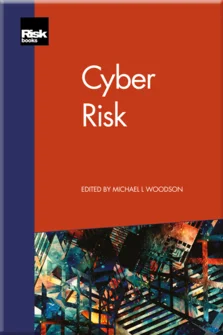Cybersecurity’s Neighbourhood Watch: The Strength of Information Sharing
Bill Nelson
Introduction: The Next Frontier of Risk Management: Cyber Risk
A Proposed Business-Oriented Approach to Cyber
A Practical Approach to Developing a Cybersecurity Programme
Regulations, Compliance and Cyber Risk Management
The Role of Cyber Risk in the Organisation
The Evolution of the Cyber Risk Role within the Three Lines of Defence
Quantifying Cyber Risk
Leadership and Culture: The Foundations of Cyber-Risk Management
Understanding the Cyber Risk Landscape: An Integrated Framework
The Transformation of Information Security: New Threats and Vulnerabilities
Cybersecurity Metrics: The Good, the Bad and the Ugly
Third-Party Risk Management
Cybersecurity’s Neighbourhood Watch: The Strength of Information Sharing
Cyber Risks in Business Continuity Management and Supply Chain Resilience for Financial Institutions
Cybersecurity Threats to the Critical Infrastructure
The True Meaning of Cyber Incident Response
Cyber Risk: Where We Have Been, Where We Are and Where We Are Going
INFORMATION SHARING AND COMMUNITIES
If you saw someone in a mask trying to break into the car in your driveway, what would you do? Turn on the porch lights? Call the police? Would you call your neighbour to warn them? Probably all three. The concept of a neighbourhood watch has been utilised for decades to ensure that neighbours share risk and threat information with each other. This type of information sharing allows citizen communities to maintain “situational awareness”, meaning a persistent knowledge of the environment and potential threats around the community. In some cases, it enables neighbours to take preventative action against potential crimes. In other cases, neighbours can help each other mitigate and recover from crimes that do occur.
One organisation’s incident, the entire community’s defence
Rapid, structured information sharing can make a substantial difference in the safety and strength of a community. Sharing threat intelligence has occurred in the military and intelligence communities for a long time. Since around the year 2000, it has increasingly been utilised by the private sector.
Many critical infrastructure entities across a variety of sectors –
Copyright Infopro Digital Limited. All rights reserved.
As outlined in our terms and conditions, https://www.infopro-digital.com/terms-and-conditions/subscriptions/ (point 2.4), printing is limited to a single copy.
If you would like to purchase additional rights please email info@risk.net
Copyright Infopro Digital Limited. All rights reserved.
You may share this content using our article tools. As outlined in our terms and conditions, https://www.infopro-digital.com/terms-and-conditions/subscriptions/ (clause 2.4), an Authorised User may only make one copy of the materials for their own personal use. You must also comply with the restrictions in clause 2.5.
If you would like to purchase additional rights please email info@risk.net











